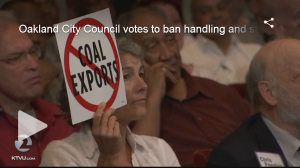The Migration To Renewables Is Happening in Stages

The way I like to explain what’s happening here with respect to the migration to clean energy is that it’s useful to divide this process into three parts:
Process #1: The grid, where we replace natural gas, and especially coal, with low-carbon energy sources. Obviously, this has begun in earnest and is making great progress.
Process #2: Electrifying transportation of cars and smaller trucks. This is also happening, though it will require more time to complete than process #1.
Process #3: Everything else. Aircraft, class 8 trucks, etc. This will not even begin to unfold for a decade or so.
Remember: you heard it here first. 🙂

According to what I’ve read, the depreciation rate for EVs is far greater than for conventional cars. That may be a temporary problem which will go away if acceptance of EVs becomes more widespread. Meanwhile, it is something that car buyers should take into consideration. It might make used EVs a good buy.
Hi Frank,
Depreciation of EV’s is more marked than other models for three reasons:
1) Most first adopters want to buy a new vehicle and acquire the tax benefits.
2) Finance is easier to obtain
3) Perception among used buyers that a used EV will not be factory supported, and the battery will have less life.
Tesla and Nissan have worked hard to maintain the viability of used EV’s, other manufacturers less so.
Craig I find it curious that you feel that the infrastructure will be “fixed” before EV adoption.
V2G technology assumes the opposite it true. But in addition EV adoption can be done in very small pieces while I expect many grid changes to require very large capital investments by very large corporations that tend to be somewhat conservative in their approach.
Lastly, innovations for planes and trucking are happening now. I would compare the efforts to what we saw with the EV about 10 years ago. What is missing is a “Tesla” to drive the industry. But I would be surprised if these take the same direction as the electric car. Planes have the surface area to take advantage of solar. To my knowledge no one has attempted to put solar panels on the top of an 800 sq ft trailer. A quick reverse envelope calc would probably explain why.
Breath on the Wind
Ev’s require a lot of power and vary variable power. Factors such gradients, temperature, load, weight, speed and just the variations of modern traffic conditions all serve to deplete ESD technology.
I’m afraid solar power in EV’s is a bit of a gimmick. The amount of charge is tiny in comparison to the needs a real vehicle.
There have been several “Tesla’s ” in Trucking and light commercial vehicles, but with the exception of the Renault Kangoo, none have enjoyed any real success. The principal reason remains the inadequacy of ESD capacity for anything but specialized EV’s.
But the future ? maybe even as I type there’s a young scientist having a Eureka moment with a breakthrough in ESD engineering (fingers crossed )!
https://trucktrailersolarpanels.wordpress.com/